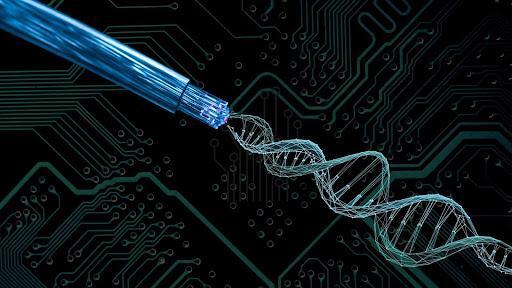
DNA’s Electron Flow May Unlock Future Biocompatible Electronics
In a groundbreaking discovery, researchers have uncovered the secrets of DNA’s electrical properties, revealing that interactions between electrons and molecular vibrations, or phonons, create novel pathways for electron transport. This breakthrough highlights DNA’s potential as a building block for future electronics, paving the way for smaller, more efficient, and biocompatible devices that could revolutionize the field of electronics.
For decades, scientists have been fascinated by DNA’s unique properties, which have led to numerous applications in fields such as medicine, biotechnology, and even computing. However, the electrical properties of DNA have remained a mystery, with many considering it an insulator due to its relatively low conductivity. Recent studies have challenged this notion, suggesting that DNA can exhibit semiconducting behavior under certain conditions.
The latest research, published in the Journal of the American Chemical Society, delves deeper into the mysteries of DNA’s electrical properties. A team of scientists from the University of California, Los Angeles (UCLA) and the University of California, San Diego (UCSD) collaborated to study how electrons move through DNA strands, with a focus on electronic applications.
Using advanced computational methods and experimental techniques, the researchers simulated the behavior of electrons flowing through DNA strands, taking into account the complex interactions between electrons and phonons. Phonons are vibrational modes of the DNA molecule, which play a crucial role in the transport of electrons.
The study revealed that the interactions between electrons and phonons create novel pathways for electron transport, allowing for the efficient flow of electrons through the DNA molecule. This phenomenon, known as “phonon-assisted electron transport,” is unique to DNA and has significant implications for the development of biocompatible electronics.
“By understanding how electrons move through DNA, we can harness its unique properties to create novel electronic devices that are smaller, more efficient, and biocompatible,” said Dr. Xiaoyang Zhu, lead author of the study. “This could lead to the development of new technologies that integrate DNA-based electronics with biological systems, enabling a wide range of applications in fields such as medicine, biotechnology, and energy harvesting.”
The potential applications of DNA-based electronics are vast and varied. For instance, DNA-based sensors could be developed to detect specific biomarkers in medical diagnostics, while DNA-based transistors could be used to create ultra-small, ultra-efficient electronic devices. Additionally, DNA-based energy harvesting systems could be designed to capture and convert environmental energy into usable electricity.
While the discovery of DNA’s electron flow is a significant breakthrough, there are still many challenges to overcome before DNA-based electronics can become a reality. For instance, the scalability and stability of DNA-based devices need to be improved, as well as the development of new materials and manufacturing techniques.
Despite these challenges, the researchers are optimistic about the future of DNA-based electronics. “We believe that DNA-based electronics has the potential to revolutionize the field of electronics, enabling the development of new devices that are smaller, more efficient, and biocompatible,” said Dr. Zhu.
In conclusion, the discovery of DNA’s electron flow has significant implications for the development of biocompatible electronics. By leveraging the unique electron-vibration dynamics of DNA, researchers can create novel electronic devices that integrate seamlessly with biological systems. As the field of DNA-based electronics continues to evolve, we can expect to see the development of new technologies that transform our understanding of electronics and their applications in medicine, biotechnology, and beyond.
Source:






